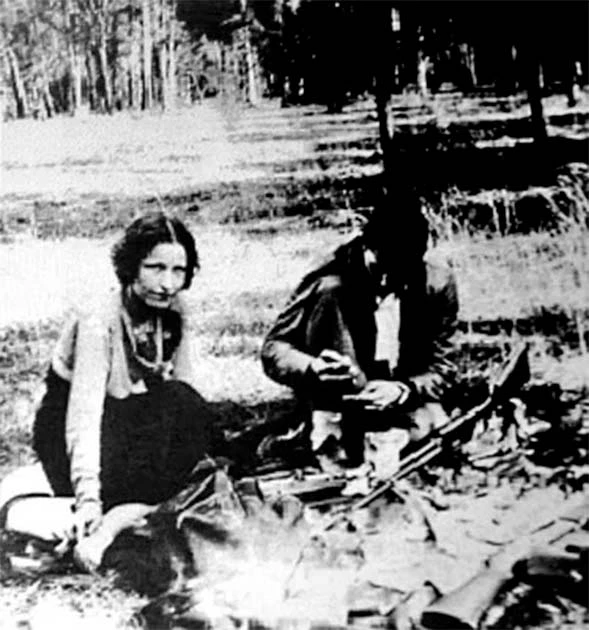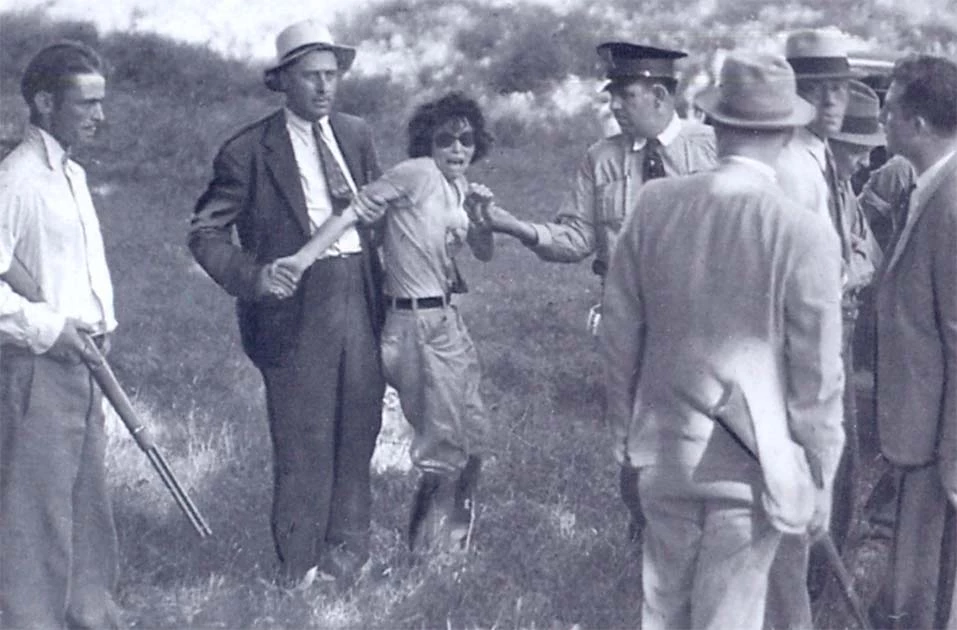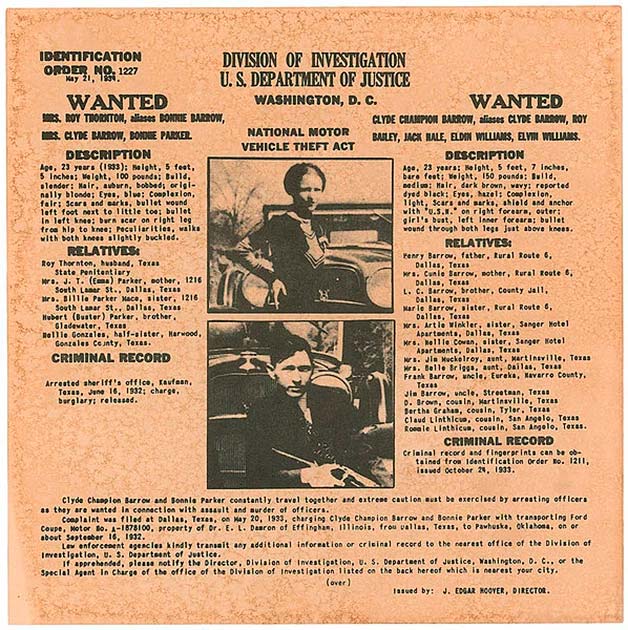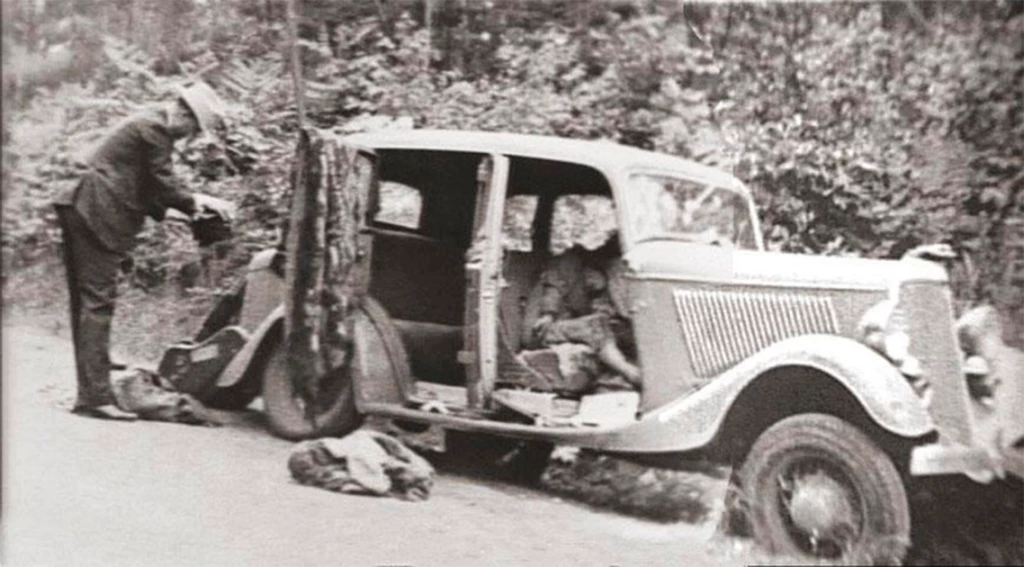In the early 1930s, a notorious criminal couple roamed the highways and byways of the American heartland, striking fear into the hearts of those they encountered. With their guns blazing and their engines roaring, they left a trail of destruction in their wake, eluding the law at every turn.
They were Bonnie and Clyde, the infamous duo who became the stuff of legend, inspiring awe, fear, and fascination in equal measure. Their daring escapades, narrow escapes, and tragic end continue to captivate people today, making them one of the most iconic criminal duos in history.
Their story, inevitably, has become highly romanticized, leaving us with two questions. Did they deserve their fearsome reputations? And were they folk heroes, or villains?
Who Were Bonnie and Clyde?
Bonnie Parker and Clyde Barrow, more commonly known as the infamous Bonnie and Clyde, were a notorious criminal couple who conducted a prolific crime spree in the United States during the Great Depression of the 1930s.
Bonnie was born in 1910 in Rowena, Texas. She lived a relatively normal life until she met Roy Thornton in her second year of high school. The two soon dropped out of school and married at a young age, Bonnie was six days short of her 16th birthday.
Their marriage was short-lived, Thornton was often absent and experienced frequent brushes with the law. After 1929 the two separated and never saw each other again but Thornton had left Bonnie with a taste for danger.

Clyde was born in 1909 in Ellis County, Texas. He came from a poor farming family and had his first brush with the law when he was arrested at age 17 after failing to return a rental car on time. This sparked his life of crime and things quickly escalated. From 1927 to 1929 he was busy cracking safes, robbing stores, and stealing cars.
Bonnie and Clyde met in Texas in 1930 at the home of a mutual friend. According to sources who knew them, they were smitten at first sight and started their criminal double act shortly afterward.
The Crime Spree and the Gang
Bonnie and Clyde had a good run. Their crime spree lasted from 1932 until 1934 and spanned several states including Texas, Oklahoma, Missouri, Louisiana, and New Mexico.
- Mystery Hitman for Hire: Who Was “Buster from Chicago”?
- Toxic Leadership: Did the US Govt Poison Prohibition Alcohol?
Their list of crimes in this two-year time span is difficult to keep count of but mainly featured a string of violent robberies, including banks, stores, and gas stations during which they used violence to intimidate their victims. Despite their modern reputations as a Robin Hood kind of act, the two were responsible for numerous brutal murders.
By the time their crime spree was brought to an end, they were suspected to have committed at least 13 murders, kidnappings, and robberies. These included killing an innocent bystander at Hillsboro, Texas; murdering a sheriff at Stringtown, Oklahoma; kidnapping a deputy in Carlsbad, New Mexico; and abducting a sheriff and the chief of police at Wellington, Texas.
In one encounter they broke five prisoners out of federal custody from Eastham State Prison Farm at Waldo, Texas. This resulted in the deaths of two guards.

Bonnie and Clyde received the help of various criminal accomplices throughout their crime spree, known as the “Barrow Gang”. These included Clyde’s brother, Buck Barrow, Buck’s wife, Blanche, and several criminals whom the two helped break out of custody.
Helping Bonnie and Clyde was a dangerous occupation. Buck was fatally wounded during a shootout with police on July 29th, 1933 during which Blanche was captured. Another member of their gang, Jones, was captured in November of the same year in Houston Texas. Of the members of their gang, only Bonnie and Clyde had a knack for escaping.
On the Run
Over the two years they were active, Bonnie and Clyde repeatedly evaded capture. A large part of this was using their smarts. When traveling they stuck to back roads and avoided using main highways and roads where there was a risk of being randomly pulled over.
They were also adept at using disguises. The two would frequently change their hairstyles and clothes to avoid being recognized by police officers. Clyde Barrow would sometimes disguise himself as a woman, his slight frame lending itself well to such concealment.
This went for their transport, as well. In each new place they visited they would steal a vehicle and ditch it again before the police had even had a chance to start looking for it.

On top of this, they avoided large towns and cities, preferring to operate in remote areas where law enforcement was less prevalent. They were helped by the fact they often received insider information from both their accomplices and local residents who were sympathetic to their “cause”.
Finally, they weren’t afraid to use brute force. When things did go wrong (which they often did) and they were confronted by the police, Bonnie and Clyde were more than happy to shoot their way out.
- London’s Notorious Female Gangsters: The 40 Elephants
- Bill the Butcher – Knife Fighting New York Gangster
The fact they operated in remote areas meant they usually only had to face a handful of police at a time. Bonnie and Clyde were always ready and willing to kill or take hostages if needs be.
The End
Bonnie and Clyde could only push their luck so far. Their criminal careers came to a bloody end on May 23, 1934, when Texas Ranger Frank Hammer and a group of law enforcement officers laid an ambush for the duo on a remote road in Louisiana.
As soon as Bonnie and Clyde’s car appeared, the posse opened fire, killing them both in a hail of bullets. The policemen fired roughly 130 rounds, each emptying their weapons.
Clyde reportedly fell to the first round fired by Hammer, which was a headshot. The parish corner, J.L Wade, listed 17 entrance wounds on Clyde’s body and 26 on Bonnie’s. Each had been hit several times in the head.
The ambush had come about as the result of an extensive investigation into the Barrow Gang’s activities. Hammer had worked out that the gang moved in a circle, skirting the edges of five states, using the “state line” rule that banned police from pursuing criminals into neighboring states. This gave him a rough idea of where to look, but covering five states at once obviously wasn’t feasible.

Then Hammer worked out that the gang was hopping between different family members’ homes across the five states. All he needed to do was work out which family member was next and he could lay his trap.
His big break came on May 21, 1934. Hammer received a tip-off as to who Bonnie and Clyde were visiting next. This allowed him to spring his trap and less than 48 hours later Bonnie and Clyde were laid in the morgue. Their reign of terror was at an end.
Today the story of Bonnie and Clyde has been lost in the romance of their daring escapades, and their narrow escapes, and tragic end continue to captivate people, making them one of the most iconic and legendary criminal duos in history. They have morphed into folk heroes enshrined is various novels, songs and films.
Everyone loves a good outlaw tale. But Bonnie, Clyde, and the Barrow Gang weren’t Robin Hood and his Merry Men. They weren’t rebels who stole from the rich and gave to the poor. They were brutal psychopaths who stole from anyone and everyone and gunned down anyone who stood in their way.
Top Image: Bonnie Parker and Clyde Barrow evaded police capture for two years as they robbed and murdered their way across America. Source: André Koehne / Public Domain.